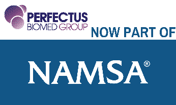Abstract
Background: Glycerol monolaurate (GML) is an antimicrobial agent that has potent activity against gram-positive bacteria. This study examines GML antibacterial activity in comparison to lauric acid, in broth cultures compared to biofilm cultures, and against a wide range of gram-positive, gram-negative, and non-gram staining bacteria.
Methodology/principal findings: GML is ≥ 200 times more effective than lauric acid in bactericidal activity, defined as a ≥ 3 log reduction in colony-forming units (CFU)/ml, against Staphylococcus aureus and Streptococcus pyogenes in broth cultures. Both molecules inhibit superantigen production by these organisms at concentrations that are not bactericidal. GML prevents biofilm formation by Staphylococcus aureus and Haemophilus influenzae, as representative gram-positive and gram-negative organisms, tested in 96 well microtiter plates, and simultaneously is bactericidal for both organisms in mature biofilms. GML is bactericidal for a wide range of potential bacterial pathogens, except for Pseudomonas aeruginosa and Enterobacteriaceae. In the presence of acidic pH and the cation chelator ethylene diamine tetraacetic acid, GML has greatly enhanced bactericidal activity for Pseudomonas aeruginosa and Enterobacteriaceae. Solubilization of GML in a nonaqueous delivery vehicle (related to K-Y Warming®) enhances its bactericidal activity against S. aureus. Both R and S, and 1 and 2 position lauric acid derivatives of GML exhibit bactericidal activity. Despite year-long passage of Staphylococcus aureus on sub-growth inhibitory concentrations of GML (0.5 x minimum bactericidal concentration), resistance to GML did not develop.
Conclusions/significance: GML may be useful as a broad-spectrum human or animal topical microbicide and may be useful as an environmental surface microbicide for management of bacterial infections and contamination.
